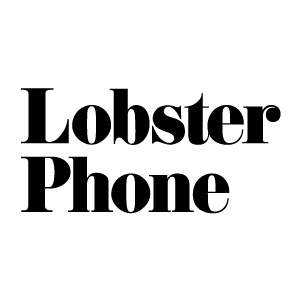Stir the Pot
Each of the eight brands is presented below and the quotes have a link to the project where you can see a few more images for each brand. I did not include everything in this post for brevity’s sake. I’ll write one paragraph for each at the end of the images. Here we go…
As the house brand, this one adopts the “CRESCO” part from the parent brand’s logo and adds a nicely contrasting light-weighted icon that includes the obligatory marijuana leaf motif but it’s the only one of the eight brands that uses it, so props for that. I like the thin-line approach and how gently the leaf sits in the sunrise-y shape, making it feel friendly and optimistic. The packaging is pretty straightforward, with bold color labels wrapping around stout glass jars. I like how the label matches the color of the cap and when you remove the label to see all the info on the inside, each jar remains color-coded. The one thing I’m not convinced by on this is the use of the condensed sans as it feels like it stands out too much.
This one definitely feels upscale from the start, with its tall confident logo and I really enjoy the idea that the missing top of the letters equals the 10% taken off from the plants. The effect can be a little weird when the logo is seen on its own because it does feel like it’s missing that 10% but it works really well when the logo is placed flush with the cap of the packaging or right under a color block. The matte and glossy black combination of the packaging is lovely and it works really well with the deep, dark few colors it contrasts with.
Mindy’s has a great combination of seriousness and rebelliousness and I like the contrast of the big, bold font for the product name with the thin script font for the chef’s name, which also looks great when paired with the bold heart/x/seal icons. The packaging is a little confusing as it tries to be too many things at once… like it’s not clear if it’s meant to look vintage or contemporary and there are too many elements at play that don’t quite go together. I also actively dislike the bold script typeface, Chiladepia, so it’s hard to like anything else when it demands so much attention. I think there was something interesting in the bold icons and vintage clip art overlays but that also gets lost.
I really like how well this comes across as being more of a medicinal brand and a lot of it is thanks in part to the smallest detail of the cross over the “i”. The lightweight slab serif, Fran, is pretty nice and I like how the four different icons match the lightness of it. The packaging is lovely with its embossed patterns and abundance of white. The only odd thing is the gradient on the triangles but this is one of my favorites.
This one is quite nice with its high-contrast sans serif and the bold holding shape hovering above it with a lightweight star icon. The holding shape gets repeated in the packaging in stark white against the lovely concentric patterns in the background of the bags that look great with the more blocky gradient approach. Even though the sans and the serif are both part of Klim Type Foundry’s Domaine mega family, I’m not a fan of how the display serif contrasts with the logo, competing for attention.
The no-frills approach of High Supply does a great job in making it look both more accessible and like the kind of thing that you could break out at a party to get said party started. This does operate on the popular deadpan sans serif aesthetic but I think it’s well warranted and works well — along with the kraft-paper labels and boxes — to differentiate this brand from the others.
Maybe you can tell I’m running out of steam here, as each paragraph gets subsequently shorter and my eyes are maybe starting to look a little glazed like the Vegas version of the Good News logo. This is a fun, feel-good logo. I personally would have skipped the different eye versions as they are not as good as the main logo and just feel like they are trying a little hard. Actually… I think I like the half-mast look of the Me Time version and could see that as being the only version. The packaging is pretty straightforward with interesting color combinations but perhaps it’s missing something to make it more interesting. It does hint at a slightly elevated product, like fancy 80% dark chocolate or something like that.
Overall, this is an insane amount of work and I really like how Lobster Phone was able to hit different notes for each of the brands. I don’t think any of the logos or packaging are showstoppers but they are all strong and appropriate for the different segments of customers and the different experiences they might be on the market for.










